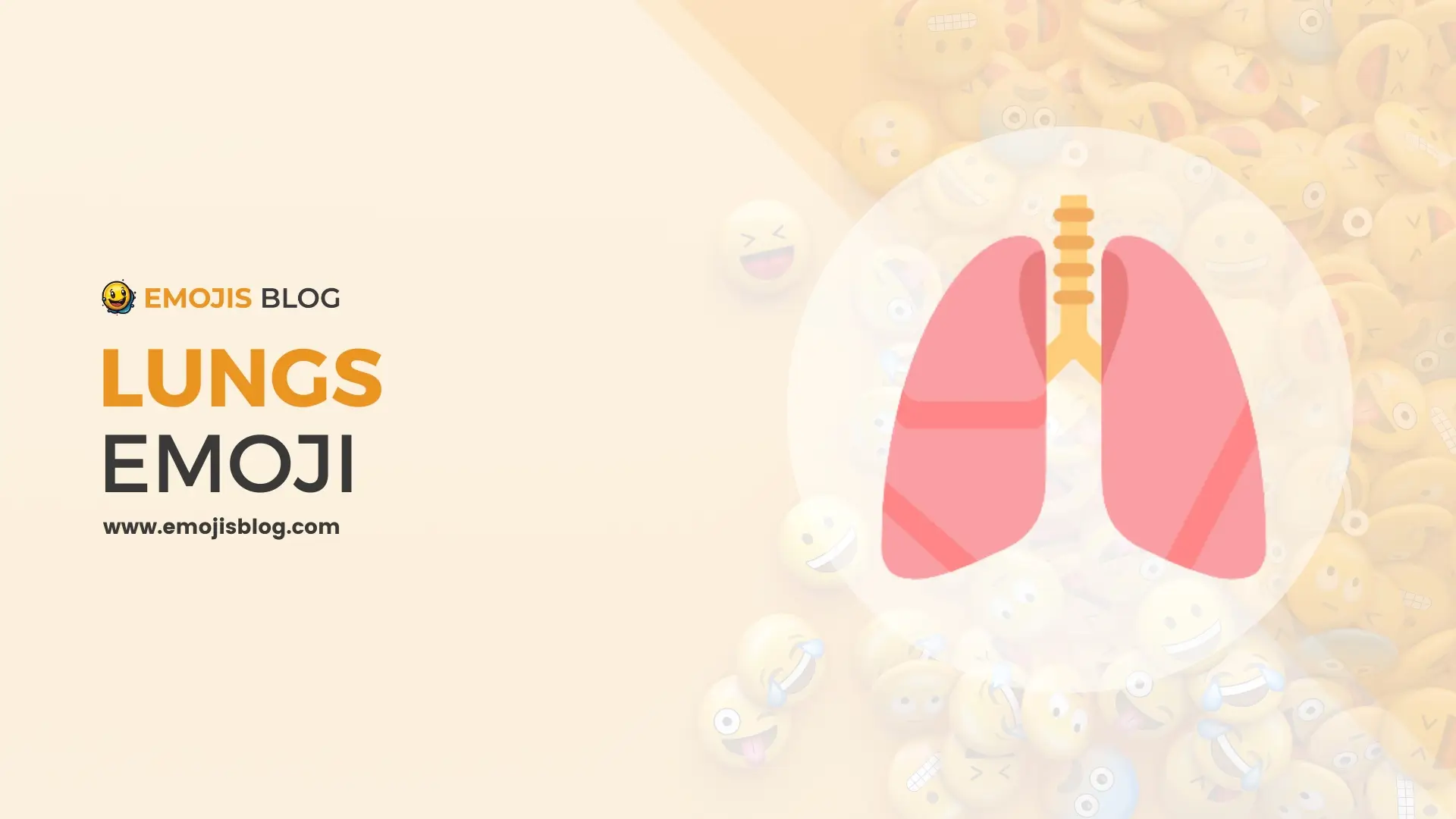What Does The Lungs Emoji Mean 🫁
🫁
The Meanings Of Lungs Emoji 🫁
The lungs emoji 🫁 symbolizes the human lungs, essential organs for the respiratory system, and is commonly used in various contexts ranging from health and medical discussions to metaphorical expressions related to breathing, life, and emotional states. It often appears in content concerning lung health, environmental issues affecting air quality, and diseases like asthma and lung cancer, serving both as a tool for raising awareness and as a means of adding depth to conversations about well-being and the human experience. Through its versatile use, the lungs emoji bridges communication gaps by encapsulating complex topics and emotions in a single, universally recognizable icon.
Technical Information
| Attribute | Information |
|---|---|
| Emoji | 🫁 |
| Name | Lungs Emoji |
| Unicode Version | Unicode 13.0 (2020) |
| Category | People & Body (body parts) |
| Subcategory | Organs |
| Codepoints | U+1FAC1 |
| Shortcode | :lungs: (on platforms supporting shortcodes) |
| Keywords | breath, breathe, lungs, organ, respiratory |
| Platforms Availability | Widely supported across major platforms such as iOS, Android, Windows, and social media platforms, with design variations specific to each platform. |
Understanding the Lungs Emoji 🫁
The lungs emoji, 🫁, is a visual symbol representing the pair of organs within the thoracic cavity of mammals, including humans, which are crucial for the respiratory system. Since its introduction, this emoji has found a place in various discussions, messages, and content across the digital world. Its meanings and uses are as diverse as the contexts in which it appears, ranging from health and wellness topics to metaphorical and figurative language. This article delves into the multifaceted significance of the lungs emoji, exploring its implications, usages, and the conversations it sparks in the digital age.
Health and Medical Context
In health and medical discussions, the lungs emoji 🫁 is straightforward in its application. It symbolizes lung health, respiratory issues, and diseases such as asthma, COVID-19, and lung cancer. Healthcare professionals and medical communicators may use it to discuss symptoms, preventive measures, and treatments related to pulmonary health. It also appears in conversations around smoking cessation, air quality, and environmental health, highlighting factors that impact lung function.
Awareness and Advocacy
The lungs emoji is often employed in campaigns and messages related to lung health awareness. It serves as a visual shorthand in discussions about diseases affecting the lungs, like during Lung Cancer Awareness Month or World Asthma Day. Advocacy groups and individuals use the emoji to draw attention to causes, share personal stories, and spread information about lung health, aiming to foster a broader understanding and support for those affected by respiratory conditions.
Metaphorical Uses
Beyond its literal interpretation, the lungs emoji carries metaphorical meanings tied to emotions and expressions. It can represent the need for space and freedom, as in “taking a breath of fresh air” or the feeling of being suffocated by certain situations. In this sense, it underscores the importance of emotional and psychological well-being, along with physical health.
Expressive and Creative Uses
In more creative and expressive contexts, the lungs emoji adds depth to messages and posts. It might accompany content related to exercise, yoga, and activities that focus on breath work and respiratory health. Additionally, artists and writers use it to evoke imagery of breath and life, often in poetry and visual art that explores themes of existence, nature, and human experience.
Conclusion
The lungs emoji 🫁, while simple in design, encompasses a broad spectrum of meanings and uses. From its role in health and medical discussions to its metaphorical and expressive capacities, it facilitates communication in a concise and visually impactful way. As digital communication continues to evolve, emojis like the lungs play a pivotal role in enriching our conversations, enabling us to express complex ideas and emotions through the universal language of symbols.

